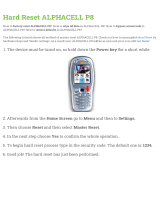
5031-161-B0-005, Rev. F2 (10/2015)
List of Tables and Figures
Fig. 1-1, PWE-6 Enclosure ................................................................................................................................. 9
Fig. 1-2, PWE/PME Series Enclosures ............................................................................................................ 10
Fig. 1-3, PWE-3 Enclosure (congurations may vary).......................................................................................11
Fig. 1-4, Battery Integration Tray ...................................................................................................................... 13
Fig, 1-5, Opening the PWE Trays ..................................................................................................................... 14
Fig, 1-6, PWE Lid Removal .............................................................................................................................. 15
Fig. 2-1, PWE/PME Series Wooden Pole Mounting ......................................................................................... 17
Fig. 2-2, PWE/PME Series Steel or Concrete Pole Mounting .......................................................................... 19
Fig. 2-3, Enclosure Grounding for Pole-mount Conguration........................................................................... 20
Fig. 2-4, Ground-mount Positioning and Safety ............................................................................................... 22
Fig. 2-5, Suggested Grounding Method ........................................................................................................... 23
Fig. 2-6, PWE-3, PWE-6, PWE-9, PWE-D36 Enclosure Pedestal ................................................................... 25
Fig. 2-7, Location of (4) Knockouts for Enclosure-to-Pedestal Mounting ......................................................... 25
Fig. 2-8, Access Holes for Front Bracket Mounting Locations .......................................................................... 26
Fig. 2-9, Ground Mounting Brackets, Installed ................................................................................................. 27
Fig. 2-10, Enclosure Ground-mount Footprint ................................................................................................. 27
Fig. 2-11, Enclosures Manufactured Before and After April 2002. .................................................................... 27
Fig. 2-12, Typical Service Entrance Wiring ....................................................................................................... 30
Fig. 2-13, Typical Receptacle Wiring ................................................................................................................ 30
Fig. 2-14, Typical ISE (Internal Service Entrance) Receptacle Wiring ............................................................. 31
Fig. 2-15, Typical BQO (Breaker Quad Option) Receptacle Wiring .................................................................. 32
Fig. 2-16, PWE Pole-mount Conguration ....................................................................................................... 33
Fig. 2-17, Meter Wiring ..................................................................................................................................... 34
Fig. 2-18, 240Vac CSA Service Entrance Wiring .............................................................................................. 34
Fig. 2-19, 240Vac UL Service Entrance Wiring ................................................................................................ 34
Fig. 2-20, SPI Locations ................................................................................................................................... 34
Fig. 2-21, SPI ................................................................................................................................................... 36
Fig. 2-22, SPI (side view) ................................................................................................................................ 36
Fig. 2-23, Battery Date Code ............................................................................................................................ 37
Fig. 2-24, Battery Integration Tray Connections ............................................................................................... 39
Fig. 2-25, Threaded Insert Battery Terminal Connections ................................................................................ 40
Fig. 2-26, Flag Battery Terminal Connections .................................................................................................. 41
Fig. 2-27, PWE-3 (without BIT) and PME Battery Wiring Diagram................................................................... 42
Fig. 2-28, PWE-4 Battery Wiring Diagram ........................................................................................................ 42
Fig. 2-29, PWE-6 Battery Wiring Diagram ........................................................................................................ 43
Fig. 2-30, PWE-D36 Battery Wiring Diagram .................................................................................................. 44
Fig. 2-31, PWE-8 Battery Wiring Diagram ....................................................................................................... 45
Fig. 2-32, PWE-9 Battery Wiring Diagram ........................................................................................................ 46
Fig. 2-33, XM Series 2 Power Supply............................................................................................................... 47
Fig. 2-34, Cooling Fan Kit Installed .................................................................................................................. 48
Fig. 2-35, PWE-8 Solar Shield Installation ....................................................................................................... 49
Fig. 2-36, Status Monitoring Bracket Location in PWE Series Enclosure ........................................................ 50
Table 1-1, PME/PWE Enclosure Specications................................................................................................ 15
Table 2-1, Service Entrance Circuit Breaker Requirements ............................................................................. 28























